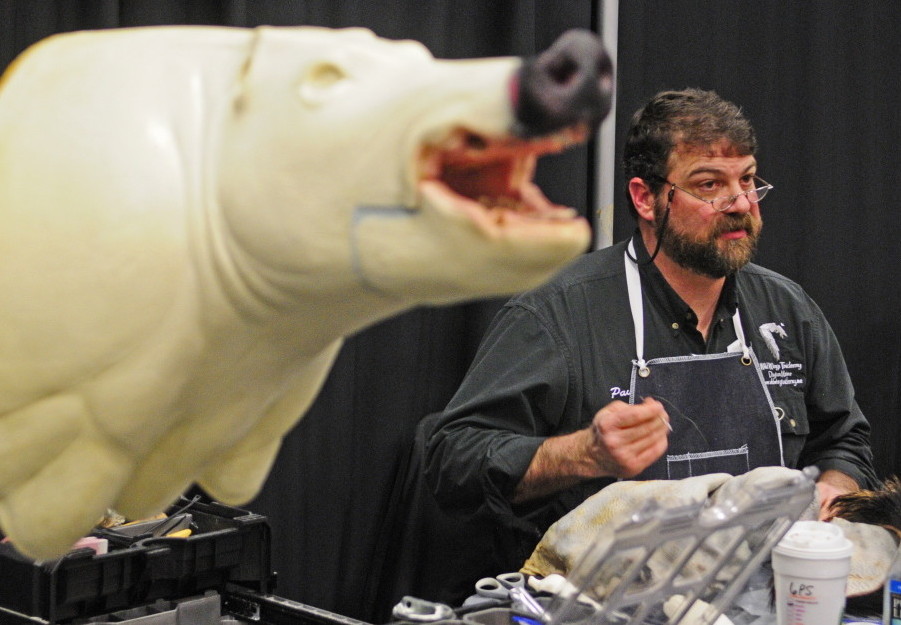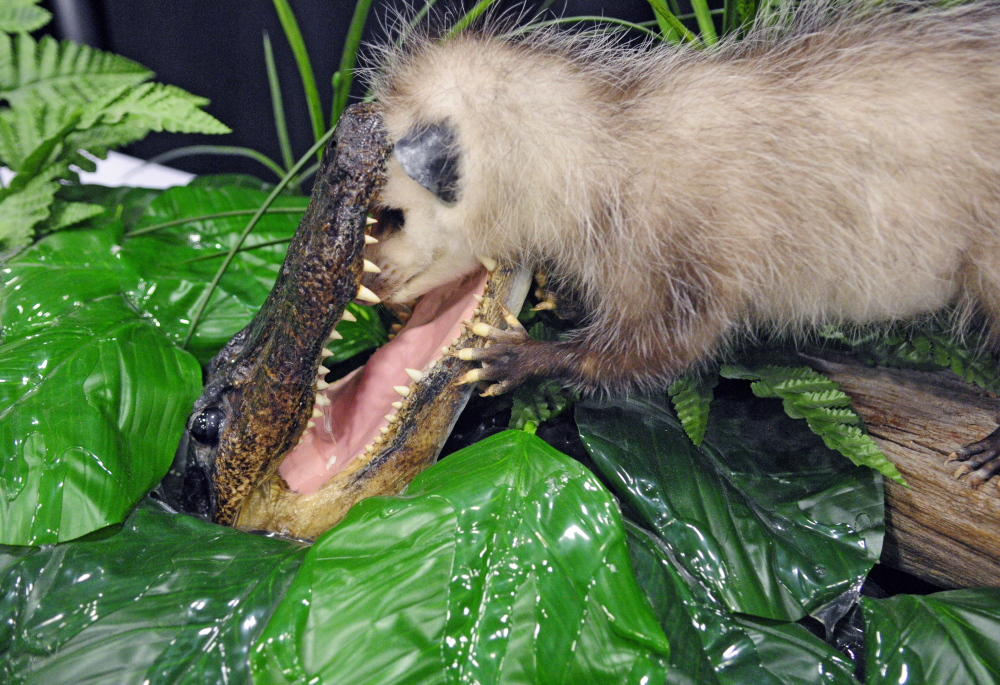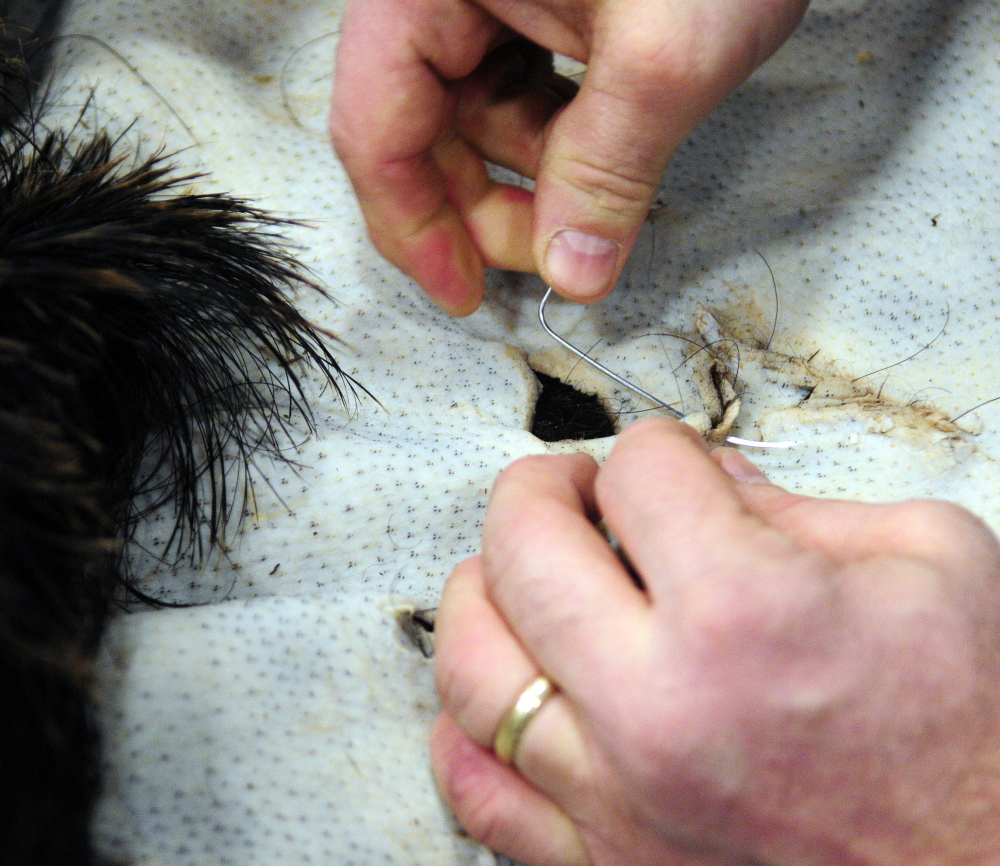AUGUSTA — Paul Reynolds worked a heavy-duty needle through the thick, gnarled hide of a wild boar from Texas, sewing shut gashes and cuts in the leather. Wearing an apron, he periodically turned the hide to inspect his work, which was hidden under the animal’s brown-and-white-specked hair.
“The hardest thing about taxidermy is making it look alive again,” Reynolds said. “When a customer tells you, ‘Gee, it looks alive,’ that’s the best compliment you can get.”
Reynolds, president of the Maine Association of Taxidermists, worked on the animal Friday afternoon at the 35th annual State of Maine Sportsman’s Show at the Augusta Civic Center. Roughly 10,000 outdoors enthusiasts are expected to attend the Friday-to-Sunday event, which features more than 100 vendors and in excess of 100 seminars.
Although the taxidermists association was displaying several examples of its members’ work, including a completed wild boar, Reynolds said the association has shifted its focus in recent years to education about the art and improving the quality of taxidermy in the state. The association will have more taxidermy demonstrations during the second and third days of the show.
Reynolds, of Dayton, said he loves hunting and fishing and taxidermy allows him to extend the seasons. He first did it as a hobby in his 28 years as a Saco police officer, but started doing it as a full-time business last year.
“This has just always been something I enjoy,” Reynolds said. “It’s relaxing.”
To his right on an exhibit stage was the white foam mold he eventually would cover with the hide. Reynolds said for full-sized animals, it’s rare to find a mold that will fit the hide. That means a taxidermist may have to add to or shave off part of a mold to get it to the right size, Reynolds said.
“You’re fitting the form to fit the animal,” he said.
Christopher Sterling, another association member at the show, said some people mistakenly think taxidermy animals have the actual animal inside.
Sterling, a construction worker from Westbrook, does taxidermy during the winter, when the building season is slow. He had a few examples of his work on display, including a white-tailed fawn and an unusual scene made up of a opossum about to be snared by an alligator. The opossum was found on the side of a road by a friend of Sterling, and another friend brought the alligator head back from Florida, he said.
The fawn, which could have fit comfortably in someone’s hands, was the victim of a car crash near Sterling’s home. He said the fawn’s mother was hit by a car when she was close to giving birth.
In order to create the models, taxidermists need to know a lot about anatomy, Reynolds said. In competitions, taxidermist are judged on anatomy, artistic ability and composition, among other things, he said. A taxidermist will sometimes make a mold of an actual animal body, he said.
“It has to be as close to perfection as possible, which – you’re chasing nature – is impossible,” Reynolds said. “You get pretty close sometimes.”
A big part of the competitions is to learn new techniques from experts in the field, he said.
Reynolds, who specializes in waterfowl, said he loves trying to recreate life by making the animals look as realistic as possible.
“Some of these animals I’ve done are trophies of a lifetime for people,” he said. “And to be able to do that for somebody, it’s awesome.”
Send questions/comments to the editors.




